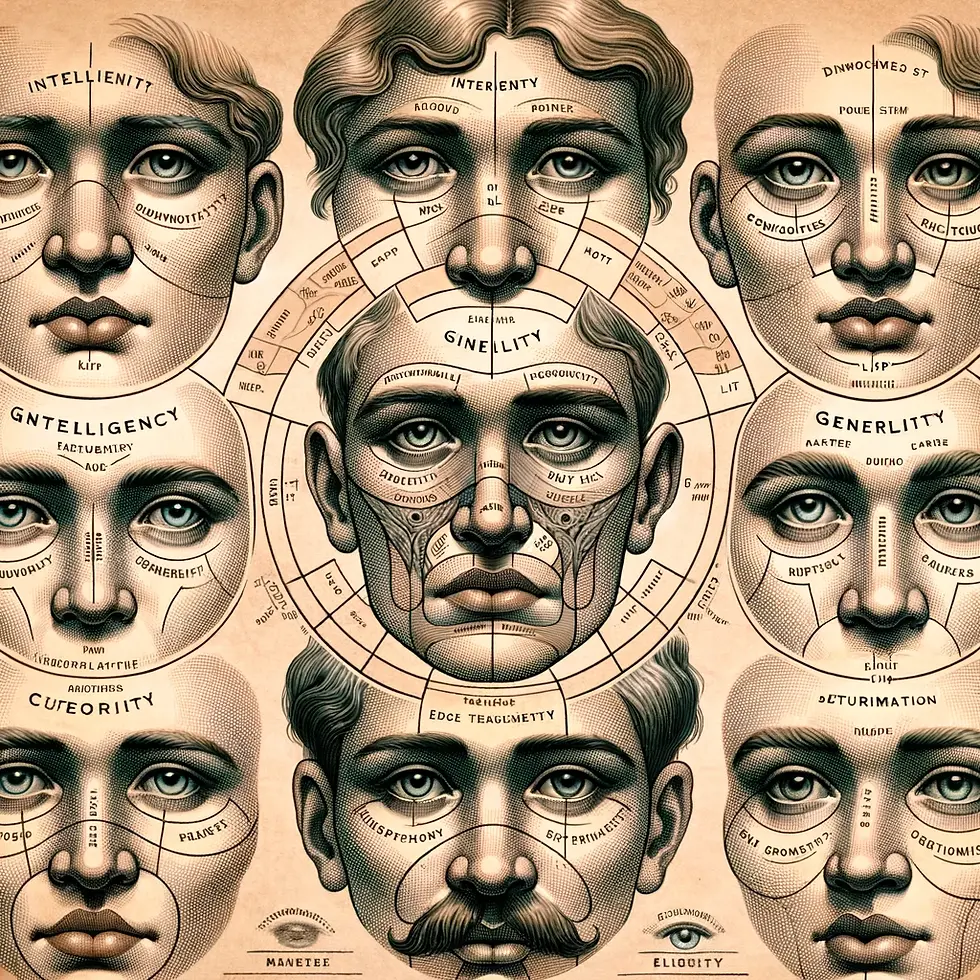The Art of Physiognomy: History and Modern Benefits
- PLUKagency .

- May 23, 2024
- 3 min read

Physiognomy, the practice of assessing a person's character or personality based on their outer appearance, particularly the face, has a long and fascinating history. While its scientific validity has been widely debated, physiognomy continues to intrigue and inspire. This blog explores the origins of physiognomy, its evolution through the centuries, and how it can benefit individuals in today's world.
The Origins and History of Physiognomy
Ancient Beginnings
Physiognomy traces its roots back to ancient civilizations. In China, the practice dates back over 3,000 years and was used to predict a person's fate and personality based on facial features. Similarly, ancient Greek philosophers, including Aristotle, discussed physiognomy in their writings. Aristotle believed that the study of physical appearance could reveal insights into human character.
Middle Ages to Renaissance
During the Middle Ages, physiognomy gained popularity in Europe, often linked with astrology and other esoteric sciences. Scholars like Thomas Aquinas and Roger Bacon considered it a legitimate field of study. The Renaissance period saw a resurgence of interest, with prominent figures like Leonardo da Vinci exploring the connection between facial features and personality traits.
The 18th and 19th Centuries
The 18th century marked a significant period for physiognomy with the works of Johann Kaspar Lavater, a Swiss pastor who published several influential books on the subject. Lavater's ideas were widely accepted, and physiognomy became intertwined with emerging fields such as psychology and criminology. In the 19th century, figures like Cesare Lombroso, an Italian criminologist, used physiognomy to identify criminal tendencies based on physical traits.
Modern Perspectives
In the 20th century, the scientific community largely discredited physiognomy as a pseudoscience. However, the practice persisted in popular culture, influencing areas such as literature, art, and entertainment. Today, while traditional physiognomy is not considered a scientific discipline, aspects of it are reflected in modern fields like facial recognition technology and non-verbal communication studies.
The Benefits of Physiognomy Today
Despite its controversial history, elements of physiognomy can offer valuable insights and benefits in contemporary society. Here are some ways in which it can be useful:
Enhancing Interpersonal Relationships
Understanding facial expressions and micro-expressions can improve communication and empathy. By being more attuned to subtle cues, individuals can better understand others' emotions and reactions, leading to stronger personal and professional relationships.
Personal Development
Physiognomy encourages self-awareness and self-reflection. By examining one's own facial expressions and body language, individuals can gain insights into their emotions and behaviors, leading to personal growth and improved emotional intelligence.
Professional Advantages
In fields such as human resources, marketing, and sales, reading facial expressions can be beneficial. It helps professionals gauge client reactions, build rapport, and make more informed decisions. For instance, recognizing signs of discomfort or enthusiasm during a negotiation can lead to more successful outcomes.
Therapeutic Applications
Therapists and counselors can use knowledge of facial expressions to better understand their clients' emotional states. This non-verbal communication can provide additional context to verbal communication, facilitating more effective therapy sessions.
Cultural Appreciation
Studying physiognomy from a historical and cultural perspective can enhance one's appreciation of different cultures and their beliefs. It offers a unique lens through which to understand how various societies have interpreted human nature and personality.
Conclusion
Physiognomy, with its rich history and evolving interpretations, continues to captivate the human imagination. While it may no longer be regarded as a scientific discipline, its principles can still provide valuable insights into human behavior and relationships. By integrating elements of physiognomy into modern practices, individuals can enhance their interpersonal skills, personal development, and professional effectiveness. As with any tool, it is essential to use physiognomy with an open mind and a critical perspective, appreciating its historical significance while recognizing its limitations.




Comments